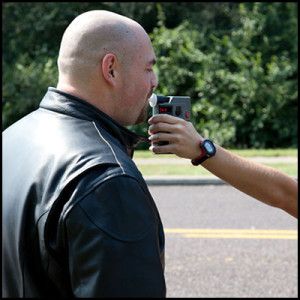Sugar Alcohol: is it a Breathalyzer False Positive?
Sugar Alcohol: is it a breathalyzer false positive?
Sorbitol and false positives
Sorbitol is a sugar alcohol with a sweet taste which the human body metabolizes slowly. It is used in mints, gums, toothpaste, and many sugar-free products. Sugar alcohol is generally part of the chemical composition of sorbitol and xylitol, which is both one of many forms of alcohol derived from fruit.
Those substances are used as a sugar replacement due to its sweet characteristic in gum, food and other general consumer products. It is slowly metabolized by the body, so DUI false positive effects for diabetics and glucose (or insulin) are minimal to none.
The problem is that all of the following are alcohol, only in different forms:
- Ethyl alcohol;
- Isopropyl alcohol;
- Methanol;
- Ethanol alcohol;
- Glycol alcohol;
- Sorbitol (sugar alcohol); and
- Xylitol.
Each will test positive for alcohol as measured by a testing device. Breathalyzers, or any breath testing machines, that use Fuel Cell technology are well documented not to be specifically able to measure only ethyl alcohol in readings. And as our Orange County DUI Lawyer Robert Miller can tell you, ethyl alcohol is the only relevant type of alcohol to be tested in the machine for a DUI.
Sorbitol and Breath Testing
Anecdotally, many in the breath testing industry confirm that blowing into breath testing machines with sorbitol in the mouth will cause false positives. A machine can falsely read as high as .04 for alcohol (when you are actually 0.00%) when chewing sorbitol gum or mints.
A television news crew, reporting on a DUI case that ended up being dismissed in Massachusetts, used Crest toothpaste, which contains sorbitol, and a lozenge, on a subject that had no alcohol. The toothpaste resulted in a .04% reading on a breath testing device in that state that had read a 0.0% before the test. When repeated with the lozenge, the same result occurred.
It is not unusual for persons that have been drinking, and many that are not drinking, to have mints in their mouth with sorbitol when they are stopped by the police. As a result, the most common scenario is for the false positive reading for sugar alcohol to be added to any alcohol found in the breath, making the reading artificially high, and usually above the legal limit of a .08% alcohol level.
As with false positives for acetones, sugar alcohol can be a false positive for alcohol. An expert witness experienced in the field of alcohol can help explain false positive breath tests to a jury and get a not guilty at trial in a DUI case. That is done by explaining the science of how the sugar alcohol inflated the reading.
Sorbitol in the Blood as a False Positive for Alcohol
Blood sorbitol, as opposed to mouth sorbitol, is tested slightly differently. The question for any blood test where sorbitol is involved is whether or not its presence in the bloodstream will register as ethyl alcohol on any breath machine or specifically on a breath testing device. Those machines will typically register any alcohol in the body, including “sugar alcohol”, even though there is no evidence that sugar alcohol makes someone drunk.
It is always a good idea in every case to talk to an alcohol expert experienced in DUI cases on the subject. Because most breath machines can’t tell the difference between the alcohols, any sugar alcohol combined with any existing ethyl alcohol molecules will combine together, to give an artificially inflated higher reading. That can be a problem if someone was, say, a .06%, but the sugar alcohol issue tests at a .04% (as it did in the tests above). The reading would be a .10%, putting the subject above the .08% level, even though they were actually below the legal limit.
When it comes to blood testing defenses, an expert witness will think of overlapping peaks (the alcohol curve of the sugar alcohol, plus the alcohol curve of the drinking ethyl alcohol), as an additive effect, which under what may appear to be a single peak to a more unsophisticated testing machine.
Sugar Alcohol: is it a breathalyzer false positive? How Alcohol Testing Works
Devices that use a fuel cell to measure the alcohol generally detect all alcohols that are present in the breath. A fuel cell oxidizes the alcohol molecule in a chemical reaction. If the alcohol would burn if a fire was applied, in general, it will react in the fuel cell. Burning is a process of oxidizing a substance, and you know that if we remove all of the oxygen, a fire goes out. Fuel cell machines (like the breathalyzers used in Orange County DUI cases) assume that if alcohol is reported, it only is reporting ethanol. Sometimes that assumption is wrong.
There is no known or generally accepted extrapolation formula to determine the increase of the breath alcohol test result from sorbitol, xylitol etc. The best practice is to use whole blood analysis with proper Gas Chromatograph testing.
How much of an increase from any in the blood? That is related to, and the key issue, in a sugar alcohol false positive case. But it is in most cases unknown. In a DUI cases, it may help to show reasonable doubt to introduce this as evidence in the case.



